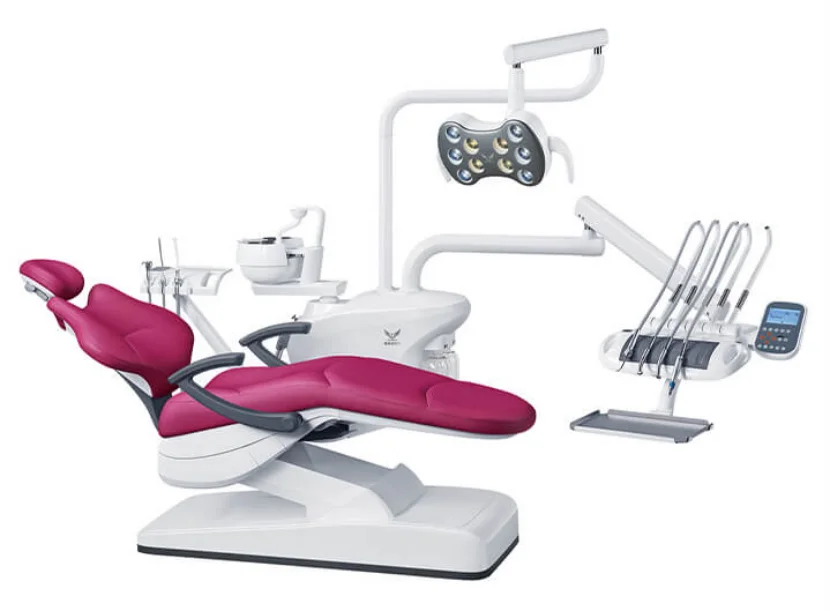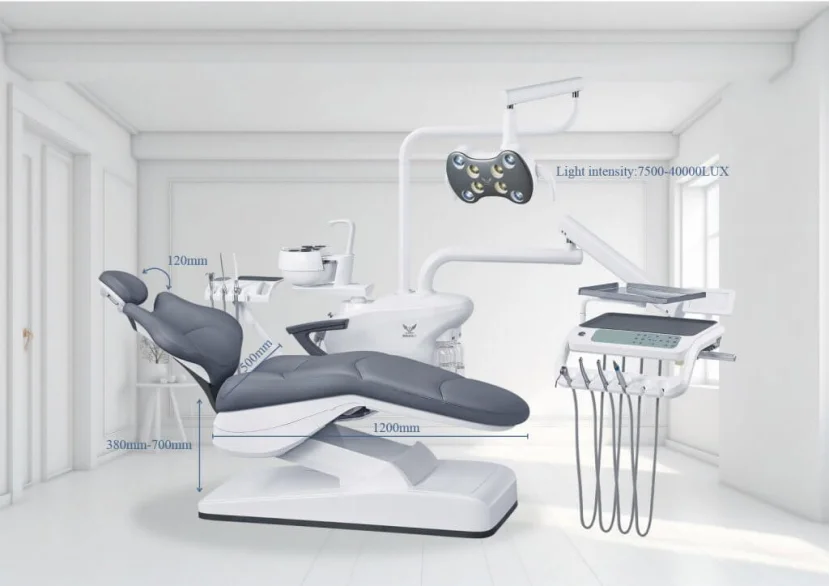Choosing the right place for a dental chair is key to keeping patients comfortable and work running smoothly. The spot needs enough room for the dentist, assistant, and tools to move easily. Place the chair in a bright area with quick access to other dental equipment. Think about comfort for the dentist too, to avoid strain during long treatments.
Dental chairs need strong electrical and water systems to work well. Before setting up, make sure the area has enough power outlets that match the chair’s voltage needs and follow safety rules. Water pipes must handle water supply and waste removal without issues. For advanced chairs like the GD-S600 hydraulic dental unit, which has full water pipeline cleaning, good plumbing is vital to stop germs and keep things clean.

Start by carefully opening all boxes with dental chair pieces. Look for any damage from shipping or missing items. Follow the maker’s setup guide exactly. High-tech models, like those from Foshan Gladent Medical Equipment Co., Ltd., often include clear manuals and some pre-built parts to make setup easier. Tighten all screws, bolts, and fittings securely as you build.
Once the chair is built, plug its electrical system into a matching power source. For hydraulic models like the GD-S600, connect the hydraulic system correctly. This ensures smooth lifting and tilting. Imported hydraulic systems, known for self-lubricating parts, last longer by reducing wear.
After setup, check all the chair’s functions to make sure it works perfectly. Test seat adjustments, lights like the patented butterfly tricolor lamp, suction systems, and water flow.
Cleaning often is crucial to keep dental offices safe and germ-free. Wipe down all surfaces after each patient with safe cleaning products that won’t harm fabric or electronics. Models like the GD-S800 disinfection dental unit have automatic cleaning systems. These make the job easier and lower germ-spreading risks.

Look at hydraulic systems often for leaks or odd performance. Inspect moving parts like armrests, headrests, and foot pedals for wear or damage. Top-quality tooth chairs with imported hydraulic cylinders tend to last longer because they’re built strong.
Electrical problems in dental chairs can mess up daily work, affecting patient care and office flow. Common issues include broken power switches, blinking lights, or control panels that don’t respond. Start by checking the power source. Make sure all cables are plugged in tight. Bad wiring or loose plugs can often be spotted by looking closely. If the dental chair has advanced parts, like the multifunctional foot pedal from Foshan Gladent Medical Equipment Co., Ltd., check that they’re set up right and work with the system.
Regular care stops electrical issues. Dust and dirt can pile up in parts, causing overheating or short circuits. Cleaning these pieces now and then with the right tools cuts down on risks. For problems that won’t go away, call a trained technician to avoid bigger issues.
Hydraulic systems are key for smooth tooth chair adjustments, making patients comfortable. But they can have issues like oil leaks, jerky movements, or a lift that stops working. First, check for oil leaks around the hydraulic cylinder or pump. Leaks often mean worn seals or broken parts that need replacing.
Jerky chair movements might come from air stuck in hydraulic lines. Clear the system by following the maker’s instructions to fix this. High-quality tooth chairs with imported hydraulic cylinders have self-lubricating features. These cut down wear and make the chair last longer.
If the hydraulic system stops completely, check fluid levels. Make sure they meet the maker’s standards. Low fluid can cause poor performance. Refill with approved hydraulic oil. Regular checks and quick fixes keep hydraulic parts working well for years.
Adjusting dental chairs properly helps dentists avoid strain during long work hours. Set the chair height so your feet sit flat on the floor. Keep your knees at a 90-degree angle. The backrest should support your lower back but not limit your movement.
Try switching between sitting and standing during the day. This reduces tiredness. High-quality dental chairs with strong materials offer lasting comfort. They also lower the chance of body aches common in dental work.
The ease of moving and steadiness of dental chairs affect how well they work during treatments. Over time, wheels can get clogged with dirt or stop rolling smoothly. Clean and oil caster wheels often to keep them moving well. This avoids strain when shifting the chair.
Steadiness is just as important for safety. Loose screws or worn bases can make the chair wobbly, risking falls. Check these parts regularly. Tighten or replace them as needed.
Advanced dental chairs with aviation aluminum alloy builds need little upkeep. Their strong, lightweight design makes them perfect for busy dental offices.
Check all power plugs. Look at cables for damage. Make sure advanced parts like multifunctional foot pedals work with the system.
Check seals often. Replace them if worn. Use only maker-approved hydraulic oils for refills.
Find adjustable seat angles, back support, and height settings that match your work style.
Clean caster wheels regularly to clear dirt. Oil them as needed for smooth movement.
Yes, imported systems, like those from Foshan Gladent Medical Equipment Co., Ltd., last longer with self-lubricating features.
For more details on customization services from Foshan Gladent Medical Equipment Co., Ltd., visit their official website or contact their support team directly!